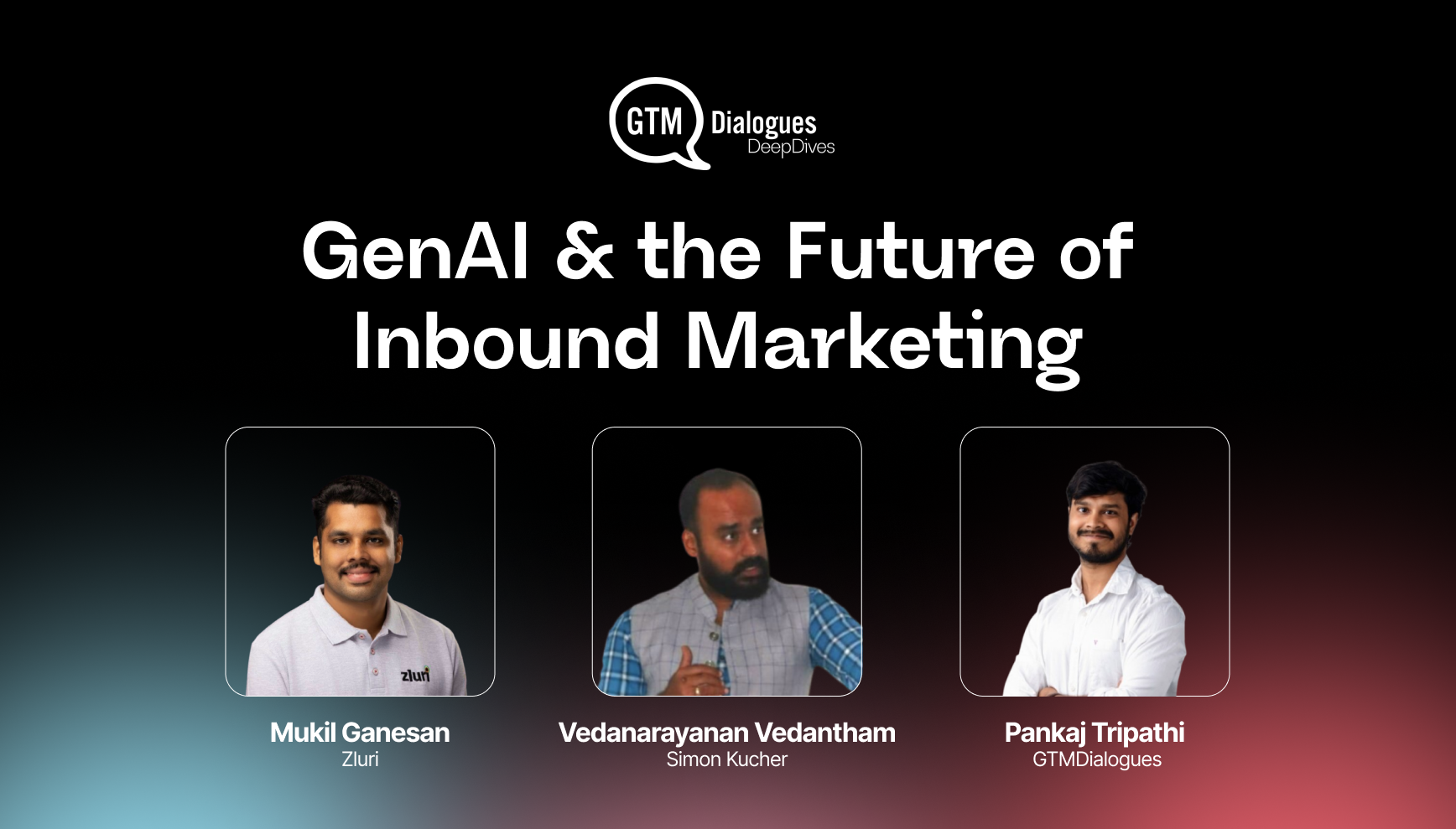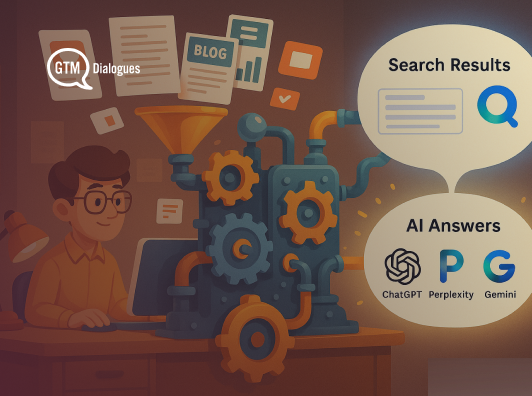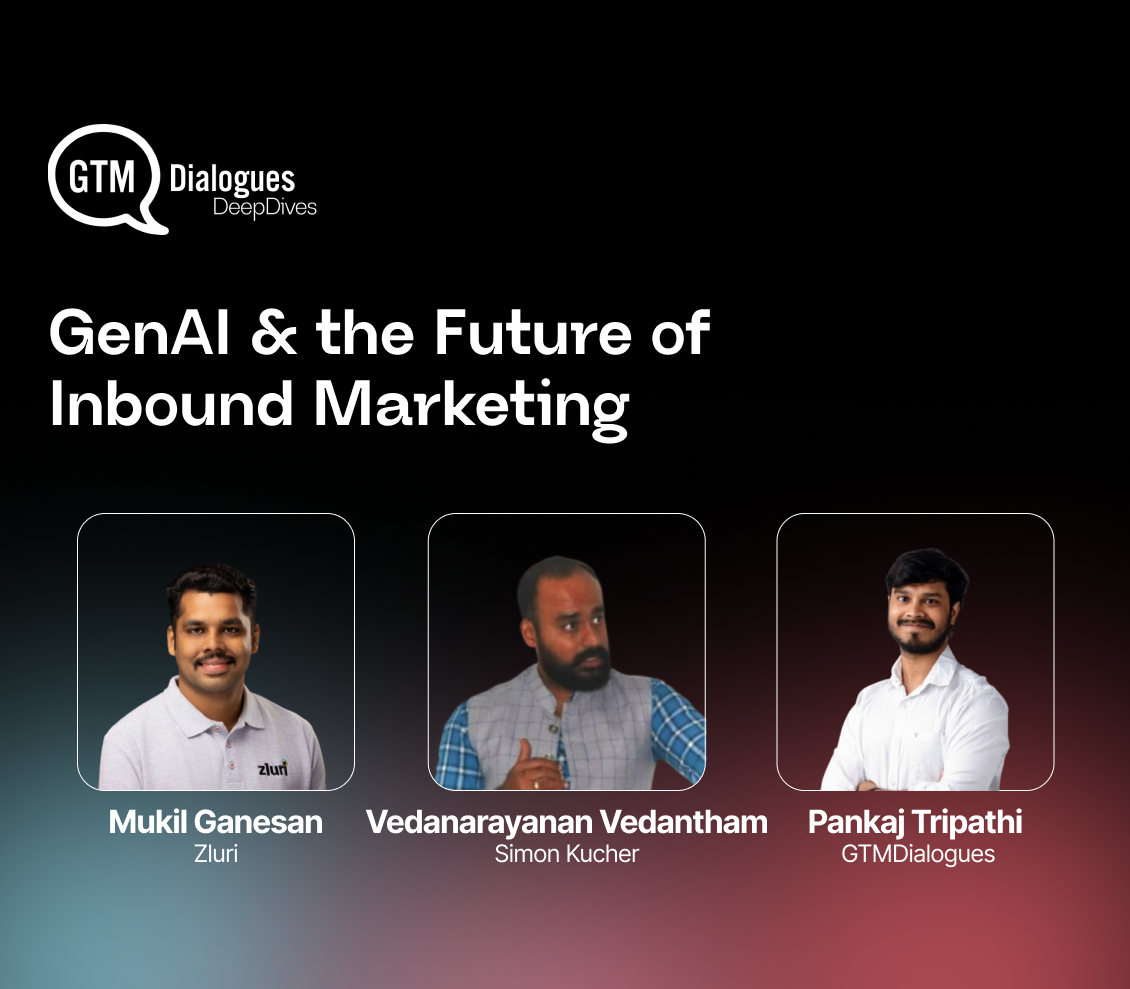In the last 24 months, buyer behavior has shifted more than it has in the past 10 years. Search engines are showing fewer clicks. Generative AI tools are becoming discovery platforms. And founders are being forced to rethink the role of content in pipeline growth.
At the recent GTMDialogues Deep Dives webinar, top marketing leaders from Razorpay, Zluri, and Simon-Kucher shared what’s working and what’s no longer enough. We discussed traditional search habits, the rise of AI-driven workflows, and the current “state of marketing”. It was a front-row view into how the best are rebuilding their go-to-market engines.
This discussion resulted in some of the most actionable lessons. You’ll learn:
- Why inbound marketing must now include AI Search Optimization (AISO)
- What TOFU content still matters, and what’s dead weight
- How channel strategies are changing (and which to deprioritize)
- Why narrative consistency now determines discoverability
And most importantly, how to build a marketing engine that thrives in a world where attention is fragmented, attribution is fuzzy, and AI is rewriting the rules.
How B2B Marketing Architecture is Evolving
The way B2B marketing is being executed today barely resembles what it looked like even two years ago.
From inbound to outbound to operations, every motion is being re-architected, driven by AI, changing buyer behavior, and the demand for tighter, signal-based GTM motions.
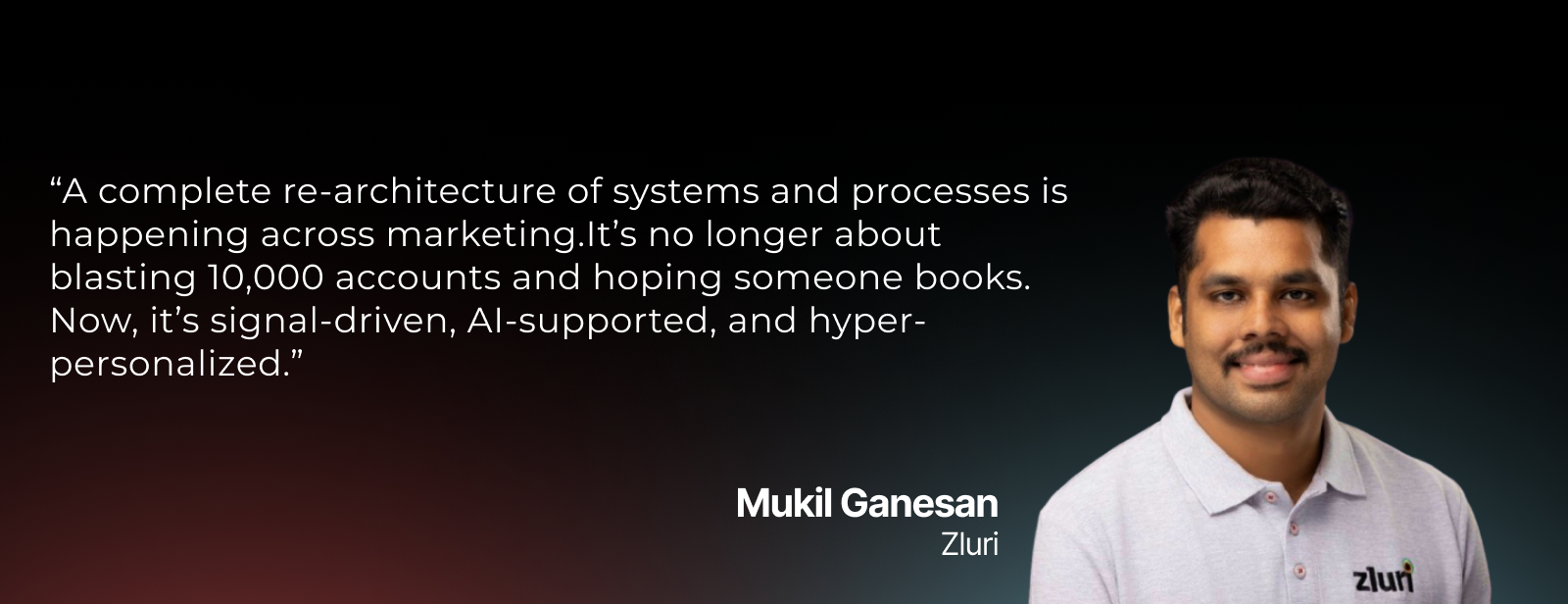
In outbound, the old spray-and-pray approach is being replaced by smaller, sharper lists. Teams are layering AI on top of intent signals to prioritize fewer, higher-quality accounts.
Inbound, too, is transforming. Google is no longer the only game in town. Buyers are skipping the website and asking ChatGPT for answers. This means your content needs to show up everywhere, not just rank on Google.
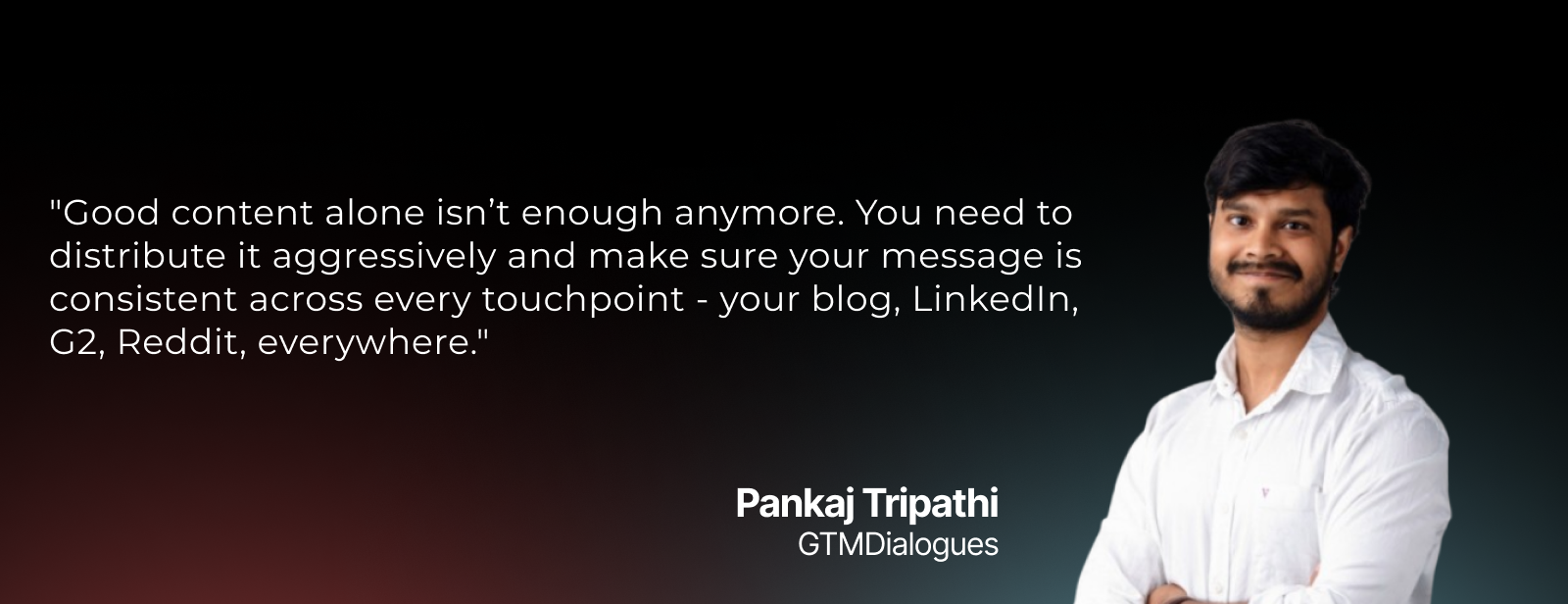
On the ops front, the rise of no-code tools is changing how lean teams operate. Platforms like Make.com and N8N are helping marketing teams automate previously manual tasks from campaign triggers to content distribution to Slack approvals.
The re-architecture is real. But it’s not just about adopting new tools. It’s about adopting a new mindset: less volume, more intent. Less gut feel, more data. And less copy-paste, more contextual storytelling.
Google Search Isn’t Dead. But It’s Different
Search still matters. But clicks don’t come easy anymore.
You might be ranking higher than ever, yet seeing fewer visitors from organic search. That’s because AI overviews, snippets, and paid placements are swallowing user attention before they ever scroll.
One example shared during the webinar showed a jump from 250K to 2.4M impressions, but only a 50% increase in clicks. The message is clear: visibility doesn’t guarantee traffic.
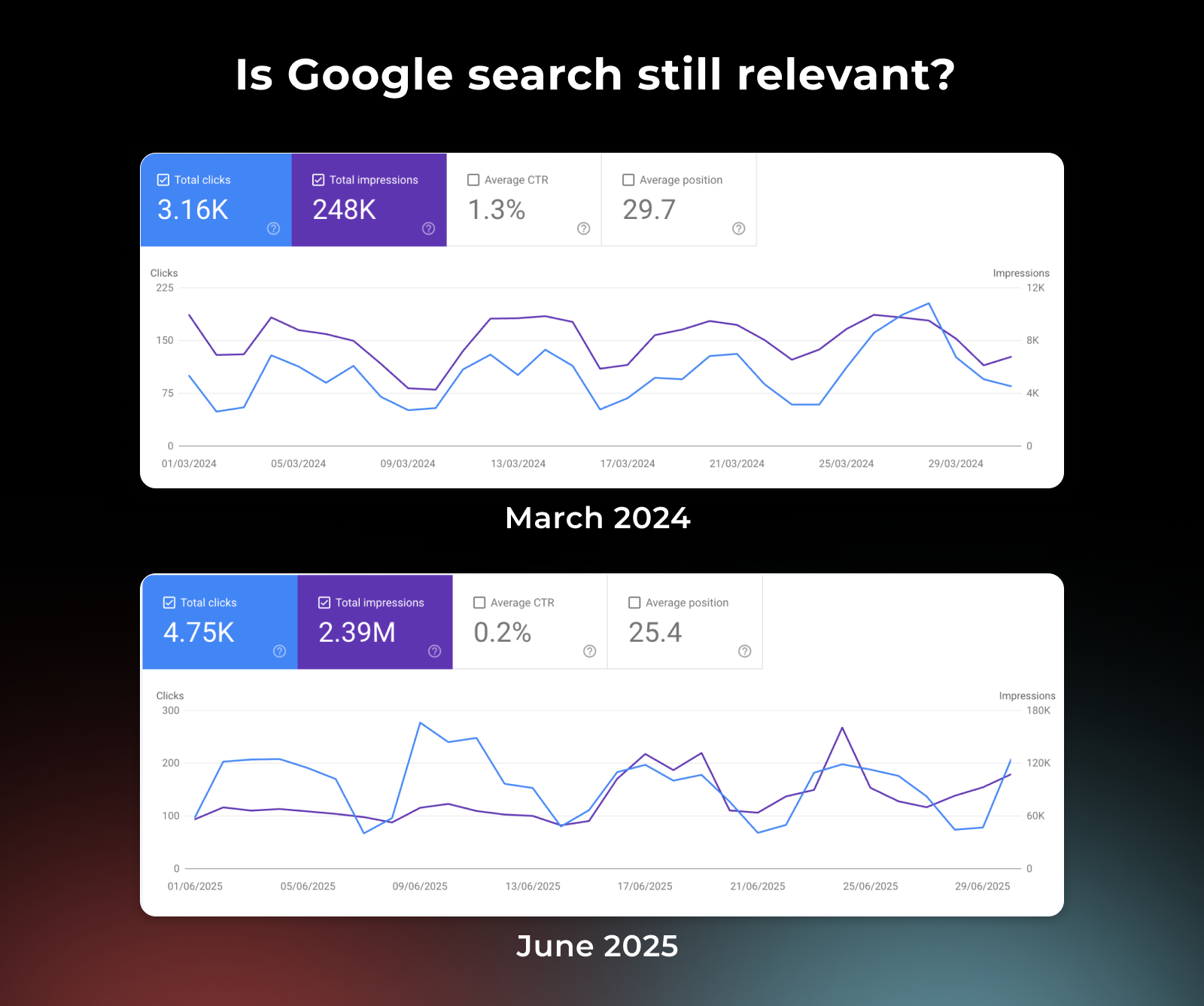
What’s causing the drop?
- AI snapshots now answer queries without users clicking through
- “People also ask” and featured snippets dominate above-the-fold real estate
- Users turn to LLMs (like ChatGPT, Perplexity) for direct answers
And LLMs don’t just pull from your site. They pull from:
- Reddit threads
- Product review platforms like G2 and Capterra
- LinkedIn posts and community forums
That means your authority is being judged across the internet, not just on your blog.
Here’s how to adapt your SEO playbook:
- Create content for humans and AI reasoning engines
- Ensure narrative consistency across blog, LinkedIn, G2, and third-party sites
- Use top-of-funnel content to build topic authority, not just chase clicks
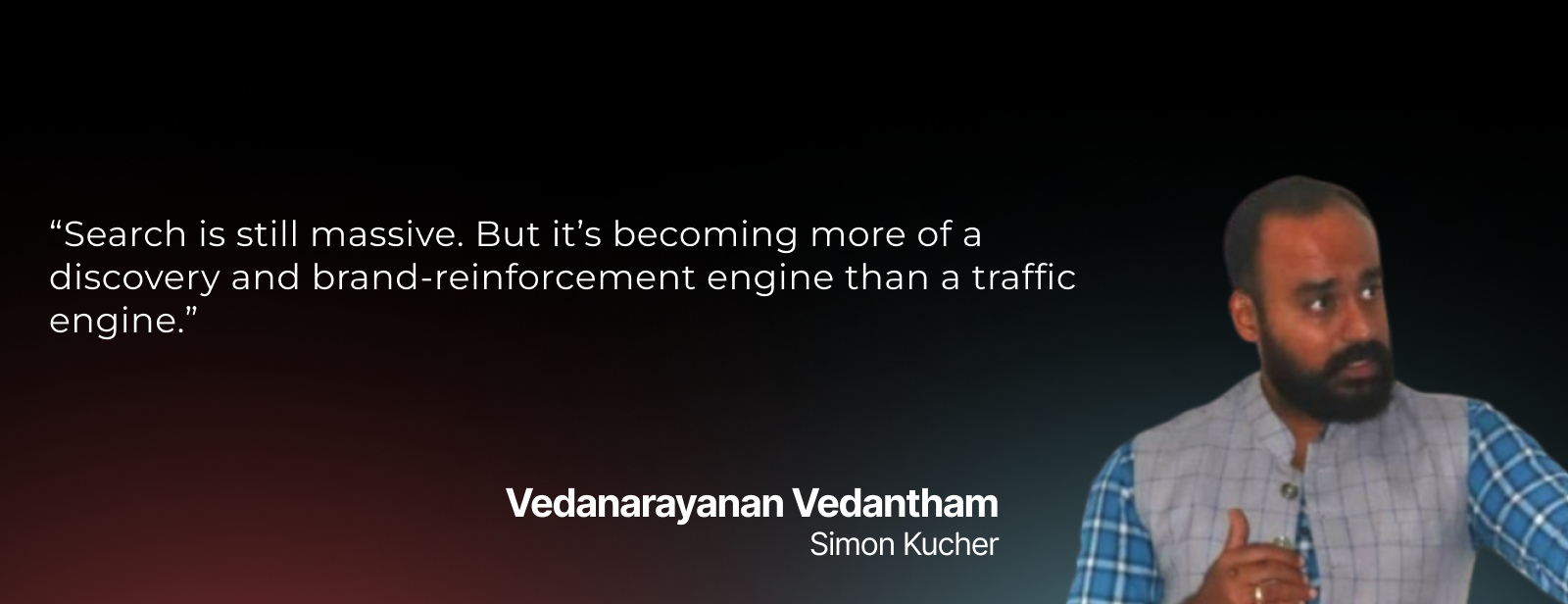
Align Your Narrative Across Every Channel
In 2025, consistency is no longer a brand guideline; it’s a visibility strategy.
AI models no longer rely solely on your website. They learn from your LinkedIn posts, G2 reviews, Reddit threads, event pages, and even community Q&As. If your messaging isn’t aligned across these touchpoints, your discoverability takes a hit.
Here’s what’s happening:
- Buyers are skipping your homepage and going straight to LLMs to ask, “Is [Your Brand] good for X?”
- LLMs are assembling answers using data from across the web, not just your content hub
- Disjointed positioning across platforms results in confusing or diluted summaries
This is where many SaaS companies get stuck. They polish their homepage but ignore what’s being said, or inferred, elsewhere.
Inbound marketing is evolving, and you need to treat every channel as part of your GTM stack:-
- LinkedIn → Founder POVs that reinforce your category stance
- Review sites → Language that echoes your product narrative
- Reddit & forums → Authentic responses that match your tone
- Sales decks & blogs → Shared value prop and key messages
If one touchpoint says you’re “all-in-one” and another says you’re “built for finance teams,” the model doesn’t know which to trust. And neither does your buyer.
Create Content That Converts
The era of measuring success by traffic and shares is over.
Your content might generate thousands of visits. But if those readers don’t convert, stay, or remember you, it’s noise, not signal.
What’s no longer working:
- Publishing 20 top-of-funnel blogs a month with no clear CTAs
- Relying on Google rankings without understanding reader intent
- Measuring success only by impressions or likes
Founders and marketing teams are shifting to what actually drives business impact:
- Conversion rate from content to trials, demos, or email signups
- Content that supports the sales process (battlecards, competitor breakdowns)
- Proprietary reports and opinion pieces that attract qualified leads
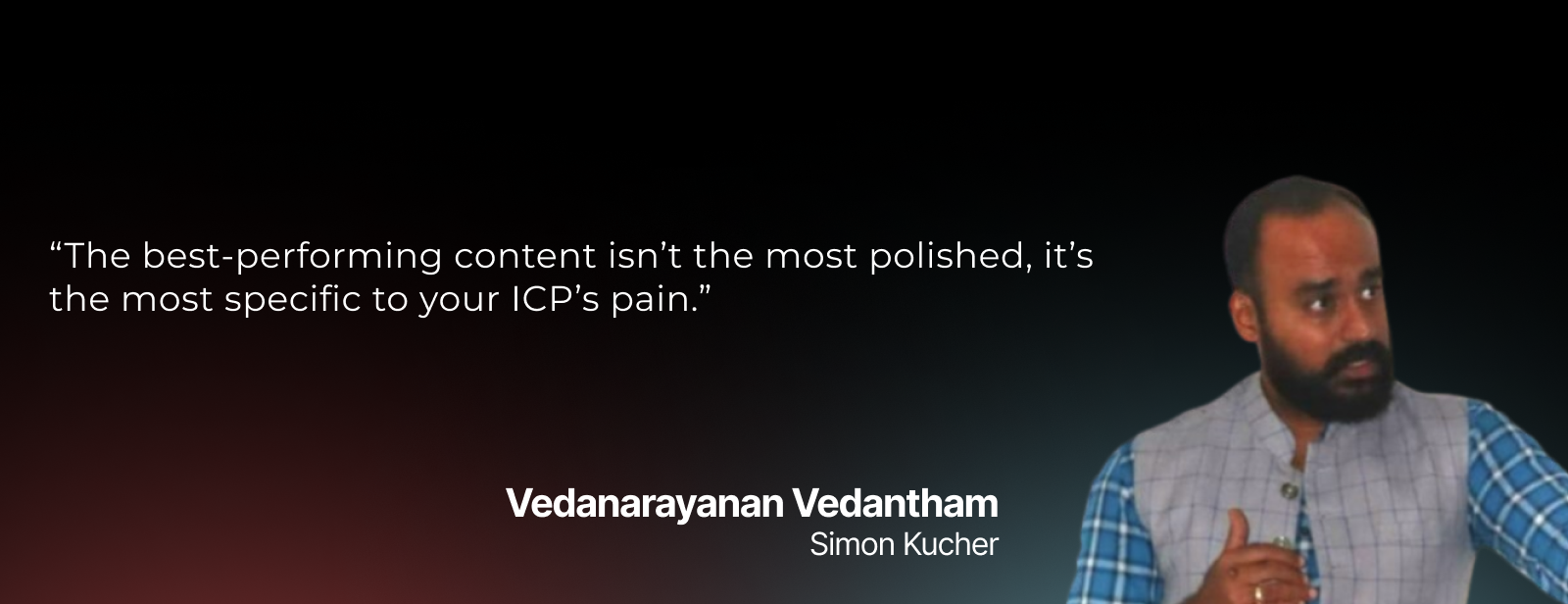
Focus on content that:
- Answers real buying questions (e.g., pricing, implementation, comparison)
- Uses your own data, customer feedback, or unique POVs
- Can be repurposed across multiple formats (blog → LinkedIn → email → short video)
This isn’t about abandoning TOFU. It’s about making sure every piece of content plays a role in your GTM engine, not just your pageview report.
Train Your Teams to Use AI
AI isn’t just a tool for your marketing stack; it’s a capability your team needs to build.
Yet in many SaaS companies, AI adoption is uneven. Some marketers are running automated workflows and content generation pipelines. Others are still stuck copy-pasting prompts into ChatGPT.
The difference often comes down to leadership.
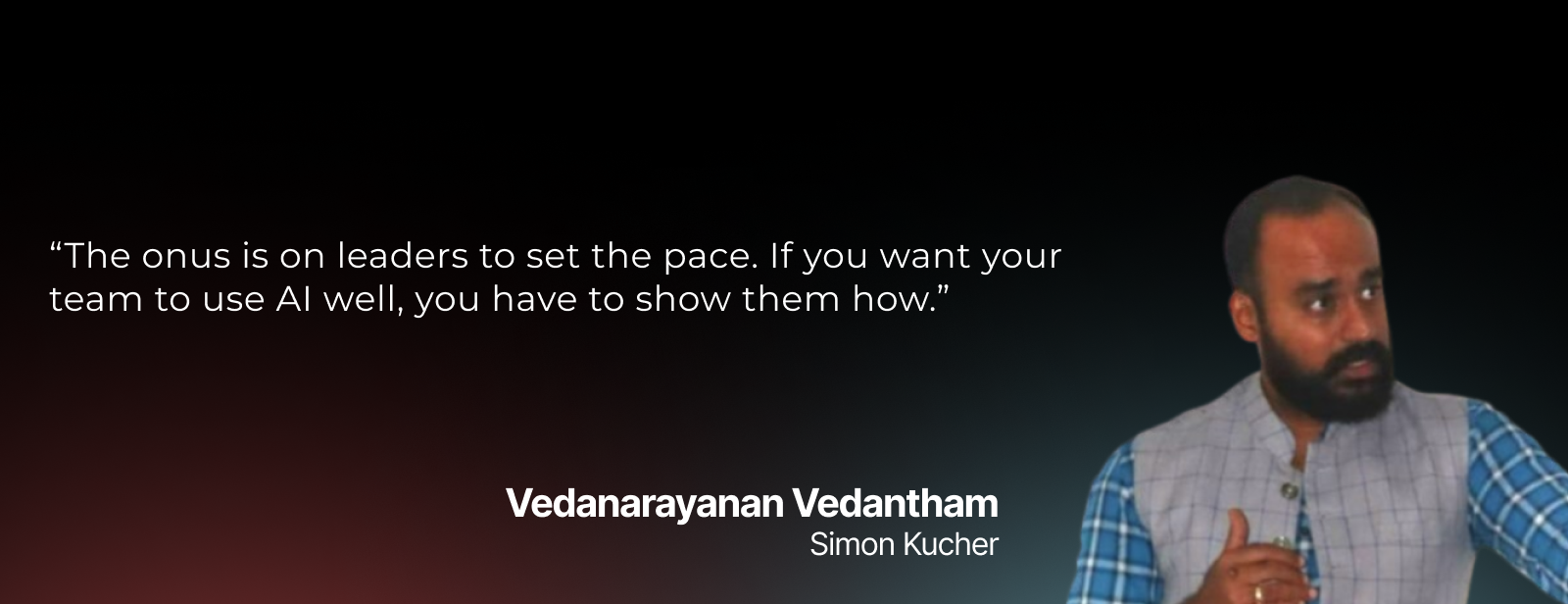
Here’s what AI-literate teams do differently:
- Automate repetitive tasks with tools like Make.com, N8N, or Zapier
- Use LLMs for ideation, testing campaign variations, and summarizing sales calls
- Create content workflows that go from idea → draft → format → Slack → publish, all in one flow
During the session, Mukil demoed a personal content pipeline where a single product update was converted into:
- A blog post
- A LinkedIn announcement
- A sales script
- An onboarding checklist
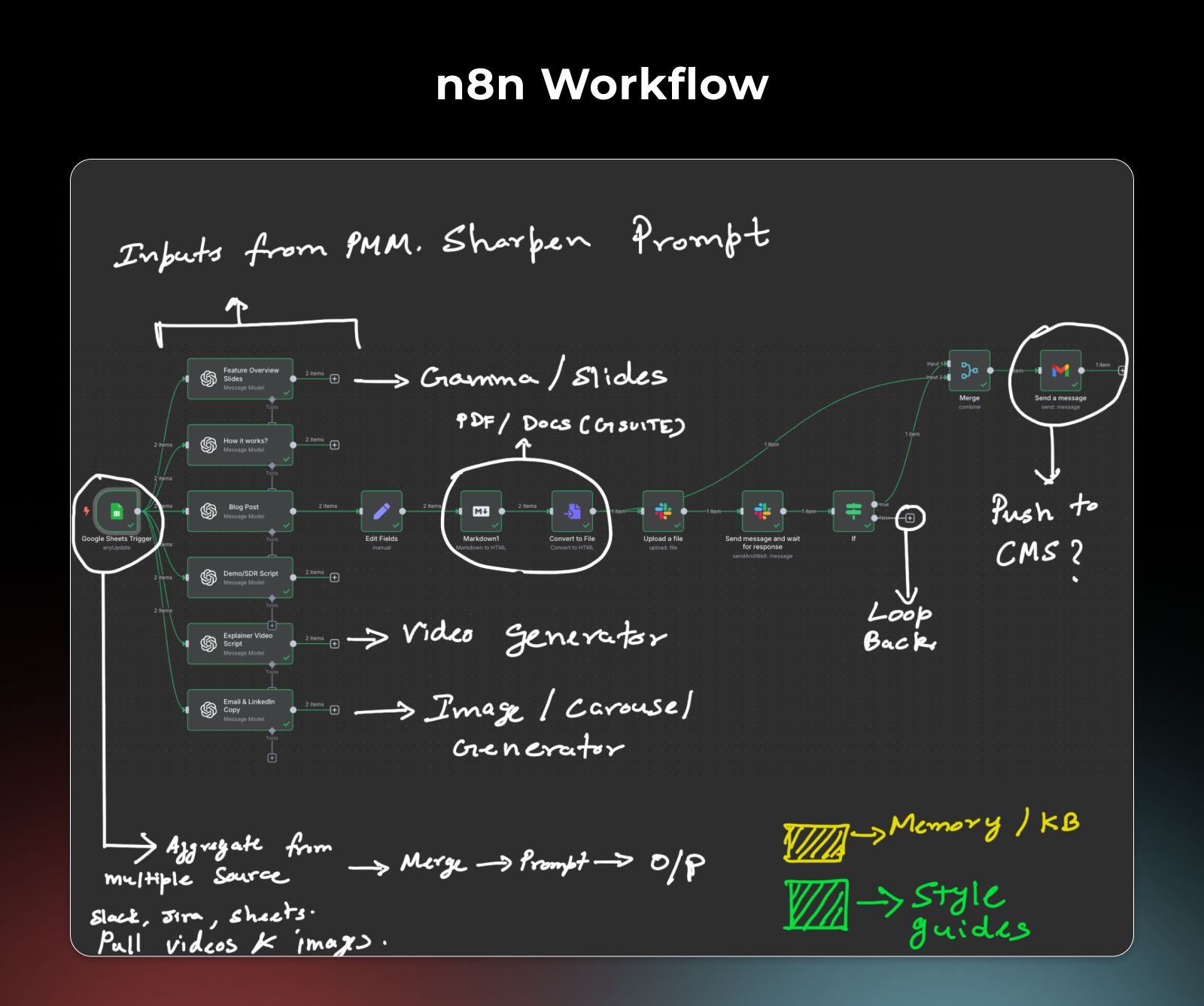
All generated, cleaned up, and routed for approval within minutes.
This isn’t the future. It’s what lean marketing teams are already doing to stay competitive.
Here’s how to upskill your team:
- Start with weekly AI sprints (e.g., “Build a blog+social+email flow using ChatGPT + Make”)
- Create internal playbooks for prompts, workflows, and use cases
- Encourage team-wide experimentation, then productize what works
It’ll result in faster execution, fewer bottlenecks, and more time spent on thinking, not formatting.
How to Measure and Attribute Inbound Success in a Multi-Touch World?
Not everything will show up in your attribution report, and that’s okay.
Today’s buyer journey is messy. They’ll see your founder’s post on LinkedIn, hear about you in a community thread, read a G2 review, and then search your brand before booking a demo.
Only the last step gets tracked.
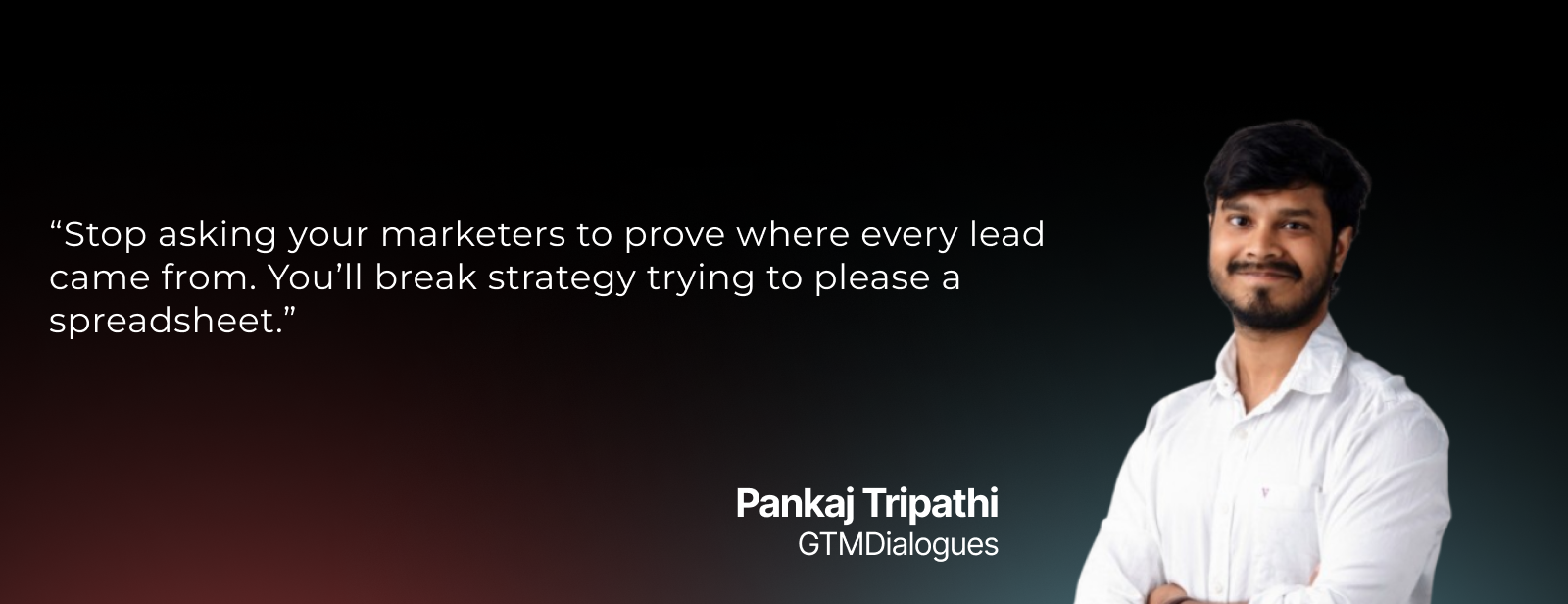
Here’s what teams need to accept:
- Buyers discover you in places that don’t give you UTMs (Reddit, Slack, ChatGPT)
- Most influence is untracked, but real
- Forcing attribution kills creative, brand-first plays
This doesn’t mean you stop measuring. It means you start measuring smarter:
- Track content-assisted conversions, not just last-click wins
- Use directional signals (demo mentions, source tags, surveys) to map real influence
- Pair qualitative feedback with quantitative dashboards
Here’s what matters more now:
- “Did this content influence the pipeline?” > “Did it bring a click?”
- “Did our messaging land across LinkedIn, blog, and G2?” > “What’s the bounce rate?”
- “Are sales closing faster with our new use-case content?” > “How many blog views?”
Smart teams are building a culture of blended attribution: combining data, conversation signals, and common sense.
If you're only running what can be measured perfectly, you're likely missing what actually works.
The Content Foundation You Still Need
With all the changes in tools, channels, and behavior, it’s tempting to throw out the old playbook entirely.
Don’t.
The fundamentals of content still matter. What’s changed is how they’re applied.
The essentials that still drive growth:
- Clear positioning across every asset - from your website to your founder’s LinkedIn
- Helpful content that answers real buyer questions, not just ranks for keywords
- Consistency in tone, message, and promise across blog, social, review platforms, and LLM-visible sources
Inbound marketing still works. But now, it’s not just about SEO, it’s about visibility across ecosystems: Google, ChatGPT, G2, Reddit, LinkedIn.
This means content should no longer live in silos.
Repurpose like a modern GTM team:
- Turn your founder’s podcast quotes into carousels and blog intros
- Convert every new product feature into a script, email, and mini-demo
- Make your sales team’s FAQs part of your top-of-funnel blog strategy
The brands that win aren’t the ones producing the most content. They’re the ones producing reusable content, built for scale, not just output. Quality. Relevance. Context. These are your new SEO pillars, whether the reader is a buyer or an algorithm.
6 GTM Moves for Modern SaaS Marketing
2025 isn’t just a year of change; it’s a year of realignment. What worked before still has a place, but only if reimagined for how buyers discover, evaluate, and decide today.
Here’s your cheat sheet from the Deep Dives session:
- Shift from SEO to AISO (AI Search Optimization)
→ Optimize for visibility in ChatGPT, Perplexity, and AI Overviews, not just Google. - Build a consistent narrative across every channel
→ Your website, LinkedIn, G2, Reddit, and founder posts must say the same thing. - Anchor your content in substance, not scale
→ Prioritize proprietary data, strong opinions, and conversion-first formats over volume. - Train your team to use AI. Don’t just tell them to
→ Create workflows that reduce grunt work and amplify speed without losing nuance. - Stop obsessing over attribution
→ Focus on blended signals: buyer behavior, sales feedback, and narrative traction. - Build reusable content assets across GTM motions
→ Every blog should feed social. Every demo should inform copy. Every FAQ should become a video.
At GTMDialogues, we help SaaS founders and GTM teams modernize their marketing stack for an AI-powered, multi-touch world. Schedule a GTM strategy call, and let’s build your next inbound engine together.
Frequently Asked Questions
1. Is SEO still worth investing in with AI search taking over?
Yes, but it’s not enough by itself. SEO now needs to work in tandem with AI Search Optimization (AISO). That means creating content that LLMs can cite, not just content that ranks on Google.
2. What is AISO, and how is it different from traditional SEO?
AI Search Optimization focuses on showing up in answers generated by tools like ChatGPT and Perplexity. It requires message consistency across your website, LinkedIn, G2, and community platforms because that’s where LLMs pull from.
3. How do I know if my content is working in this new environment?
Look beyond vanity metrics. Ask:
- Are qualified leads mentioning your blog or LinkedIn posts?
- Are sales cycles shortening?
- Is your content influencing pipeline even if attribution doesn’t show it?
4. Should founders be creating content personally?
Yes. Founder-led content builds trust and thought leadership, especially on LinkedIn and during early-stage growth. It’s also what LLMs often prioritize when summarizing a company’s story.
5. What are the best tools to modernize content workflows?
Some of the most effective tools used by teams today include:
- Make.com / N8N – for building automated content flows
- ChatGPT / Claude – for ideation and drafting
- Slack + Google Docs – for approvals and collaboration
- Typefully / Taplio – for LinkedIn content scheduling
6. How much content should we publish each month?
There’s no magic number. The better question is: how many high-quality, multi-use content pieces can you produce consistently? Ten strong assets reused well can outperform 50 one-offs.
7. What’s one quick win we can implement this month?
Audit your LinkedIn, G2, and homepage messaging for consistency. Align your narrative across those three and you’ll improve both buyer clarity and LLM visibility almost instantly.

